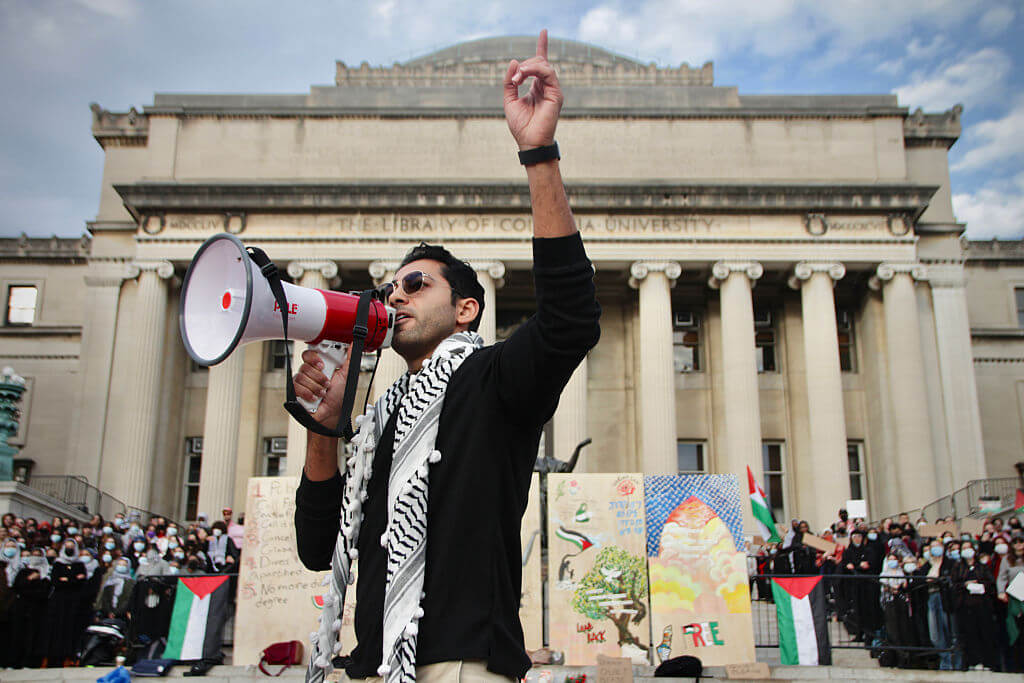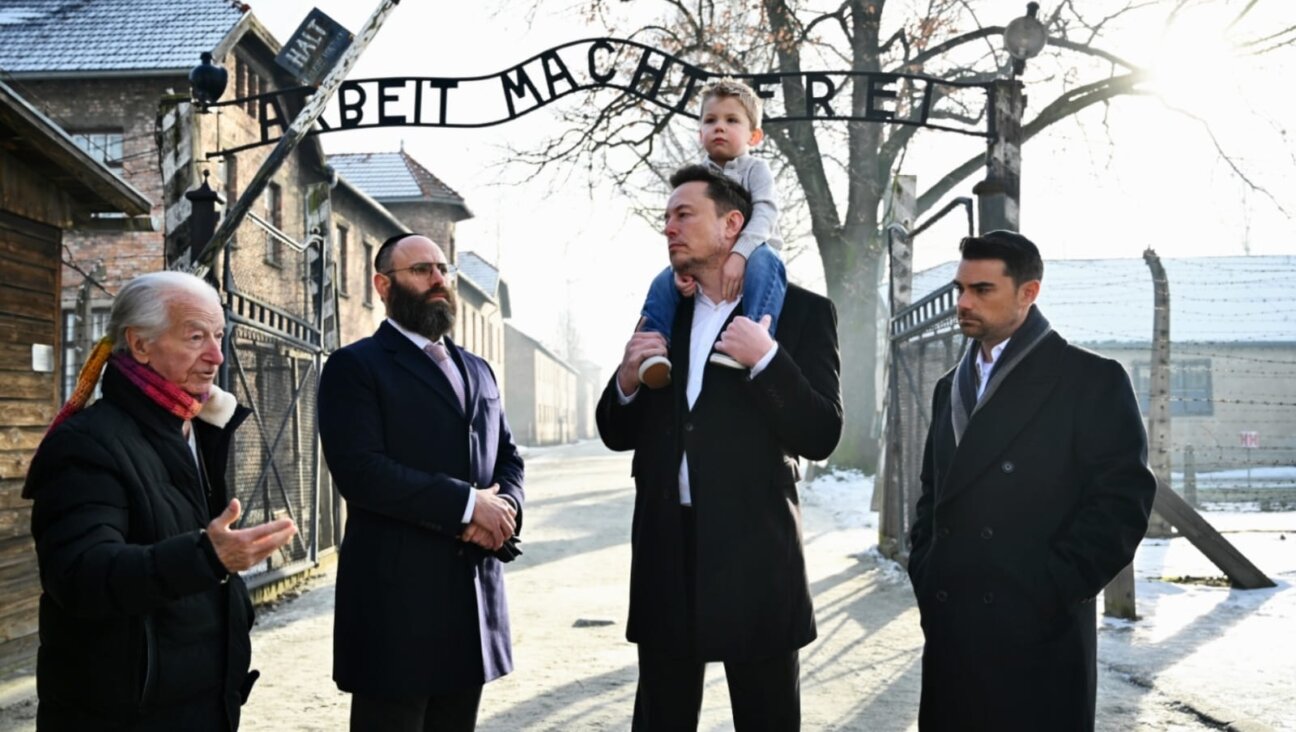Watching Rabbis Making Human Rights History, an Embattled Soldier on My Mind
Doron Almog is one of Israel’s toughest soldiers — the first onto the tarmac in Entebbe in 1976, the first into Beirut in 1982, field commander of the mid-1980s desert exodus from Ethiopia, chief of the Southern Command during the worst years of the second intifada. Retired in 2003, he was called back this past fall to head an inquiry into the screw-ups of the Lebanon war. Now he’s locking horns with Israel’s famously bull-headed military chief, Dan Halutz.
Two days after submitting his Lebanon report this month, Almog was in New York on a personal mission: raising funds for a residence for the severely disabled, which he heads. His autistic son Eran, 22, lives there. “Eran is the most influential person in my life,” he said. “He has never spoken a word to me, but he has taught me more than any other person” — about compassion, about duty, “about what it means to be responsible to the weakest among us.” A year ago, Almog made headlines when he flew to London for an autism fundraiser but couldn’t leave the plane. There was a warrant out for his arrest for war crimes, related to the 2002 bombing of Hamas military chief Salah Shehadeh, in which 14 civilians were also killed.
So how does it feel, I asked, to think you’ve dedicated your life to ideals — defending Israel, protecting the weak — and find you’ve become an international pariah? Almog’s mouth curled into a bitter smile. “How is it supposed to feel?” he snapped, muttering a few imprecations about “human rights” and “leftists” — “and some of them are my own people.”
Almog was on my mind a lot as I sat, a few days later, at the first-ever North American conference of Rabbis for Human Rights. There were 250 rabbis and rabbinical students of every denomination gathered from across the country to discuss the creation of a new type of rabbinical organization — activist, outspoken, committed to the burning issues of the day. It felt exciting to be there, witnessing a birth.
The rabbis had begun some years back as a smallish support group for a well-known Israeli human rights organization. The Israeli rabbis are famous for standing in front of Palestinian homes to block demolitions and helping to harvest Palestinians’ olives. About a year ago, the American supporters got the idea to become activists themselves and take on issues here, like Abu Ghraib and Guantanamo. They expected to convene a few dozen colleagues in December to discuss ways of speaking out from the pulpit.
But somehow, around Yom Kippur, the thing started to snowball. By the time they convened, there were hundreds of them. They were joined by some of the top Jewish leaders in the international human rights movement.
To the outsider, the program looked as though it might be the beginning of something really big. The conference brought together rabbis who rarely sit in the same room, much less band together in one organization: Reform leaders David Saperstein and David Ellenson, Orthodox scholars Saul Berman and Dov Linzer, leftist firebrands Michael Lerner and Arthur Waskow, Conservative stalwarts Gordon Tucker and Ed Feld, youthful rebels Jill Jacobs and Ayelet Cohen. Add to that such human-rights legends as Ken Roth of Human Rights Watch, Michael Ratner of the Center for Constitutional Rights and Ruth Messinger (who needs no introduction), and the mix seemed potent. It almost looked as though this could be a newly emerging Jewish power center for the new Democratic era, a sort of liberal answer to the Jewish neoconservative circles that gathered during the Bush years around Commentary magazine and the American Enterprise Institute.
The mood was electric. The rooms were filled for three days with passionate speeches on torture, eavesdropping, Darfur and talmudic teachings on compassion. In between were dozens of workshops, from biblical texts on poverty to ways of rousing your congregation without — well, getting fired.
The rooms belonged to New York UJA-Federation. Convening there, in the center of communal power, added to the feel of gravitas and mainstream legitimacy. It also caused grief to federation president John Ruskay, who had authorized it and now faced angry protests from conservative donors.
One particularly nettlesome e-mail campaign was urging protests against Ruskay for hosting “a group of orgs” that included the Center for Constitutional Rights. The center makes a practice of filing war-crimes lawsuits against international figures. It had brought actions a year before, the e-mail said, against former Israeli chief of staff Moshe Ya’alon, for the accidental 1996 shelling of a United Nations post in Lebanon, and former Israeli Shin Bet chief Avi Dichter, for the Shehadeh bombing.
“John Ruskay is aware of this,” the e-mail said. Most of the attendees, it seemed, weren’t. Indeed, the hallways were filled with knots of rabbis heatedly discussing how to reconcile their twin passions of battling injustice and defending Israel. It’s complicated.
There were moments of high drama. Few were more potent than the appearance of a Muslim imam, Georgetown University chaplain Yahya Hendi, to announce the formation of Imams for Human Rights. “My brothers and sisters, I am here to tell you that you are not alone,” he began. “I believe it’s about time we came together to speak for the dignity of every human soul, Jewish, Christian and Muslim.” The next day, with equal drama, a Southern Baptist seminary professor announced the launch of Evangelicals for Human Rights.
Even more affecting was a Catholic nun, Sister Dianna Ortiz, who heads an international coalition of victims of torture. She is a victim herself, she said. Teaching English in Guatemala in 1989, she was imprisoned for a month, burned with cigarettes, gang-raped and worse. “No one ever gets over having been tortured,” she said. “Worse than my own torture was hearing the screams of the others.” She made a promise there, she said, “that I would tell the world what I had seen, that I would not forget them.” As she spoke, she broke down in tears. Half the crowd wept with her.
Afterward, I wandered the hallway, buttonholing rabbis and asking their reactions to the nun’s tale. For myself, I couldn’t get past wondering: If one woman could be so changed by a month of torture in a dank prison amid the screams of dozens of others, how might she have reacted to five years of torture in a death camp alongside millions of others? Wouldn’t she be likely to do anything — anything — to make sure it never recurred? And wasn’t her talk, in a way, the best defense for the actions of an Avi Dichter — or a Doron Almog?
I asked a half-dozen rabbis, some strangers, some old friends. Each in turn looked startled, then intrigued. Then most changed the subject.
It was, admittedly, an awkward moment to intrude. One group was rushing off to the Israeli consulate to protest an Arab home demolition. Others were off to prepare for the evening’s big banquet. They were honoring the three Israeli founders of Rabbis for Human Rights and Michael Ratner’s Center for Constitutional Rights.
It’s still new. It might be the start of something big, or it might not. It’s too early to tell.
The Forward is free to read, but it isn’t free to produce

I hope you appreciated this article. Before you go, I’d like to ask you to please support the Forward.
Now more than ever, American Jews need independent news they can trust, with reporting driven by truth, not ideology. We serve you, not any ideological agenda.
At a time when other newsrooms are closing or cutting back, the Forward has removed its paywall and invested additional resources to report on the ground from Israel and around the U.S. on the impact of the war, rising antisemitism and polarized discourse.
This is a great time to support independent Jewish journalism you rely on. Make a gift today!
— Rachel Fishman Feddersen, Publisher and CEO
Support our mission to tell the Jewish story fully and fairly.
Most Popular
- 1

Fast Forward Ye debuts ‘Heil Hitler’ music video that includes a sample of a Hitler speech
- 2

Opinion It looks like Israel totally underestimated Trump
- 3
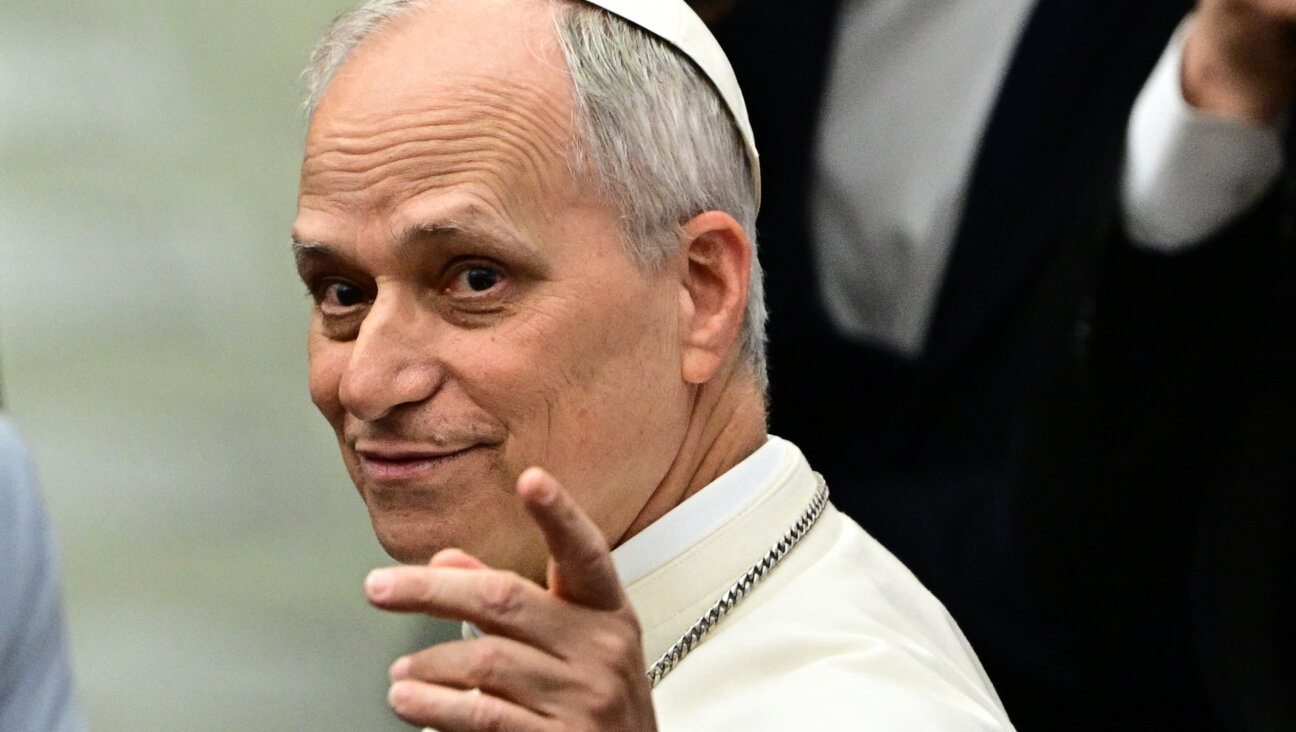
Culture Is Pope Leo Jewish? Ask his distant cousins — like me
- 4

Fast Forward Student suspended for ‘F— the Jews’ video defends himself on antisemitic podcast
In Case You Missed It
-
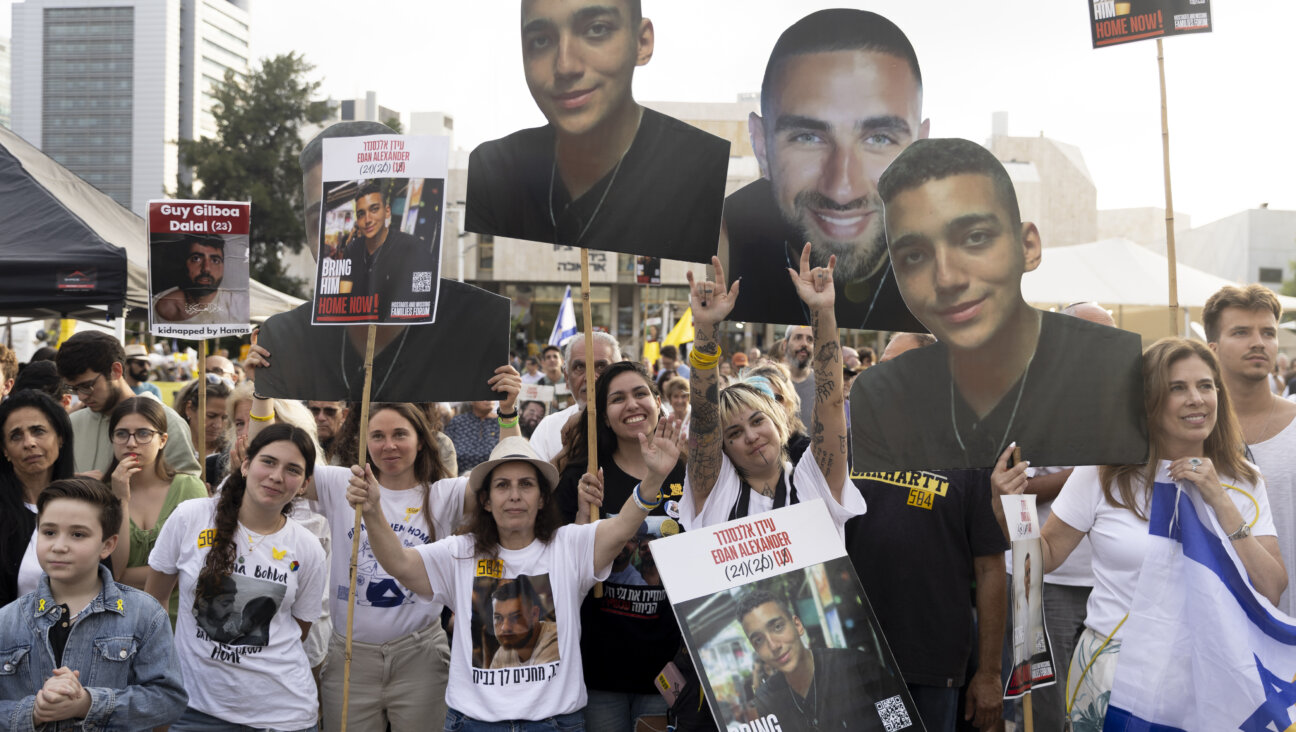
News In Edan Alexander’s hometown in New Jersey, months of fear and anguish give way to joy and relief
-

Fast Forward What’s next for suspended student who posted ‘F— the Jews’ video? An alt-right media tour
-

Opinion Despite Netanyahu, Edan Alexander is finally free
-
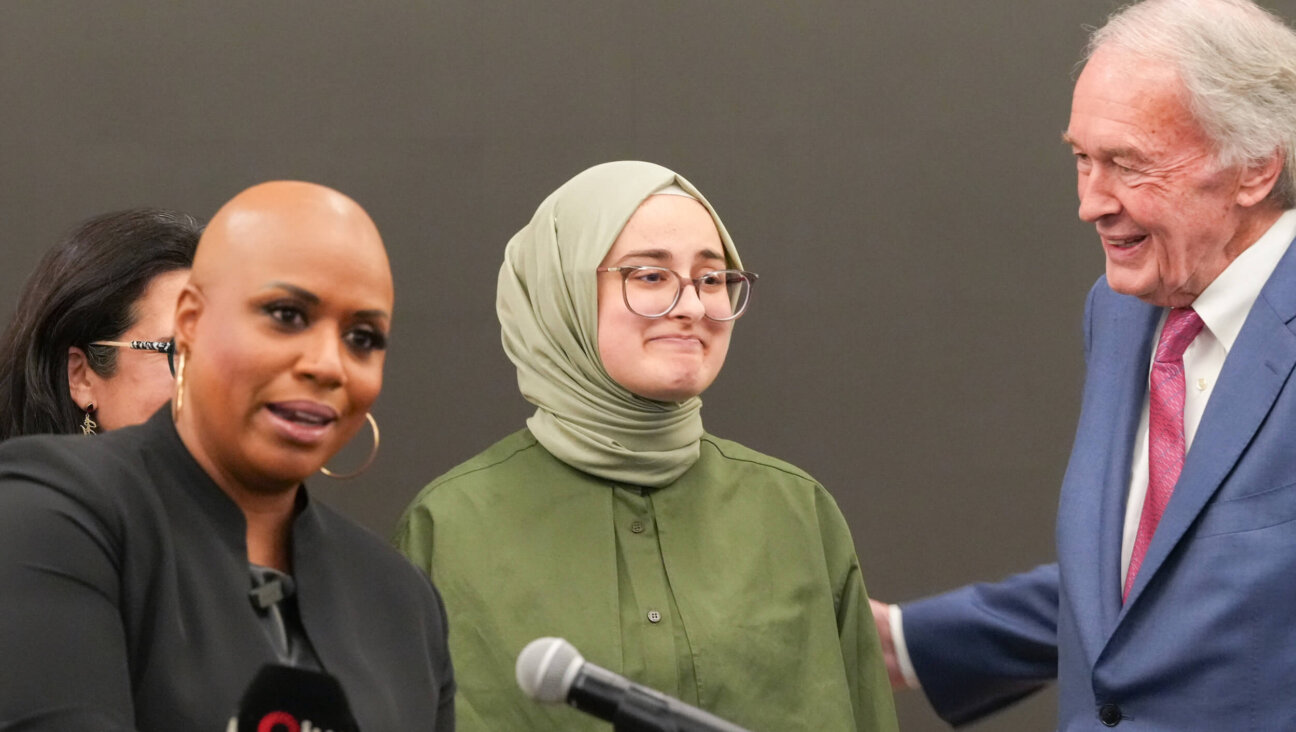
Opinion A judge just released another pro-Palestinian activist. Here’s why that’s good for the Jews
-
Shop the Forward Store
100% of profits support our journalism
Republish This Story
Please read before republishing
We’re happy to make this story available to republish for free, unless it originated with JTA, Haaretz or another publication (as indicated on the article) and as long as you follow our guidelines.
You must comply with the following:
- Credit the Forward
- Retain our pixel
- Preserve our canonical link in Google search
- Add a noindex tag in Google search
See our full guidelines for more information, and this guide for detail about canonical URLs.
To republish, copy the HTML by clicking on the yellow button to the right; it includes our tracking pixel, all paragraph styles and hyperlinks, the author byline and credit to the Forward. It does not include images; to avoid copyright violations, you must add them manually, following our guidelines. Please email us at [email protected], subject line “republish,” with any questions or to let us know what stories you’re picking up.









